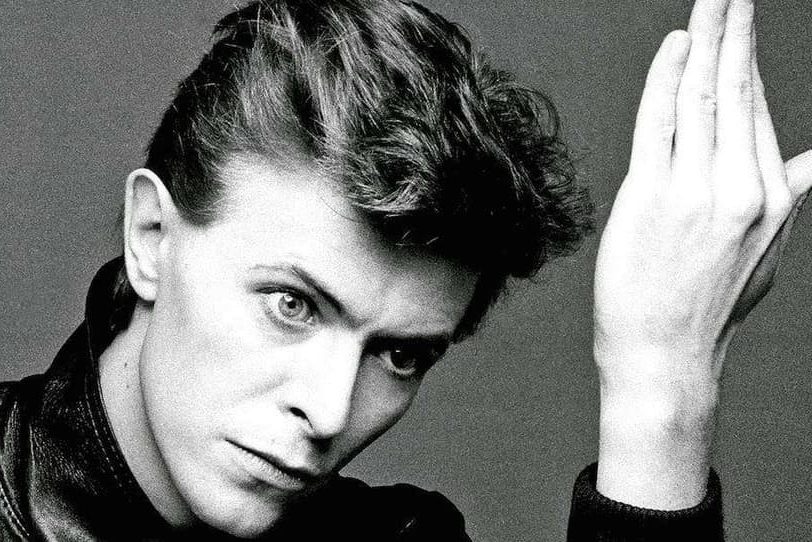6: … As were several of his album covers
Each of David Bowie’s albums covers was as radically different as the music within, tracing their creator’s visual evolution as much as his songs charted his sonic reinventions. Yet some were deemed too much for public consumption, among them the original The Man Who Sold The World sleeve, which, depicting Bowie reclining in a “man’s dress” created by British designer Michael Fish, was rejected by his US record label. A handful of years later, the Diamond Dogs album cover was again the cause of some concern when its original gatefold image showed Bowie’s dog’s bollocks on full display (they were airbrushed out before release). Nor would that be the last time a Bowie artwork featured troublesome genitalia. In 1992, the Tin Machine II album was similarly censored when its images of the ancient Greek statue Kroisos Kouros were once again deemed too shocking for the US record-buying public.
7: He appeared to have different-coloured eyes – but that wasn’t quite true
Bowie’s striking androgyny was perfect for his breakthrough as the extraterrestrial rock messiah Ziggy Stardust, but the fact that he seemed to have mismatched irises – one blue, one brown – also helped give him an otherworldly quality. His ocular irregularity is often put down to a genetic condition known as heterochromia, but the real reason David Bowie had two different-coloured eyes had nothing to do with biology. Rather, it was the result of a falling out that the 15-year-old Bowie had with his school friend George Underwood. When Bowie took a girl Underwood also fancied out on a date, Underwood punched him in the eye, leaving him with a permanently dilated pupil – or anisocoria. “I only ever meant to give him a black eye at most,” Underwood, who remained lifelong friends with Bowie, once told the BBC. “But later David said I did him a favour. After all, everyone talks about his eyes, don’t they? It did give him that really enigmatic look.”
8: He wrote and produced hits for other artists, including Lou Reed and Iggy Pop
While working up material for his first bona fide masterpiece, Hunky Dory, David Bowie was also considering trying his luck as a jobbing songwriter for other artists. Before recording the Hunky Dory standout Oh! You Pretty Things himself, he’d initially given it to former Herman’s Hermits frontman Peter Noone, who had a UK No.12 hit with the song in the spring of 1971. Even as the Hunky Dory material took shape, Bowie split his time overseeing a side-project group named Arnold Corns, which would soon form the basis of his own Ziggy-era backing band, The Spiders From Mars. When Bowie and the Spiders shot to intergalactic levels of fame, he still found time to help some of his rock’n’roll idols, among them Lou Reed, for whom he co-produced the 1972 album Transformer, and Iggy Pop, whose iconic proto-punk outfit, The Stooges, staged an electrifying comeback thanks to another Bowie co-production, Raw Power. (Bowie would again kickstart Iggy’s career when, in between working on his own mid-70s masterpieces, Low and “Heroes”, he helped the Detroit wild child realise his own solo career.) He also saved British glam idols Mott The Hoople from extinction when he gifted them All The Young Dudes, a glam-rock smash which became so huge it stopped the Herefordshire rockers from breaking up.




